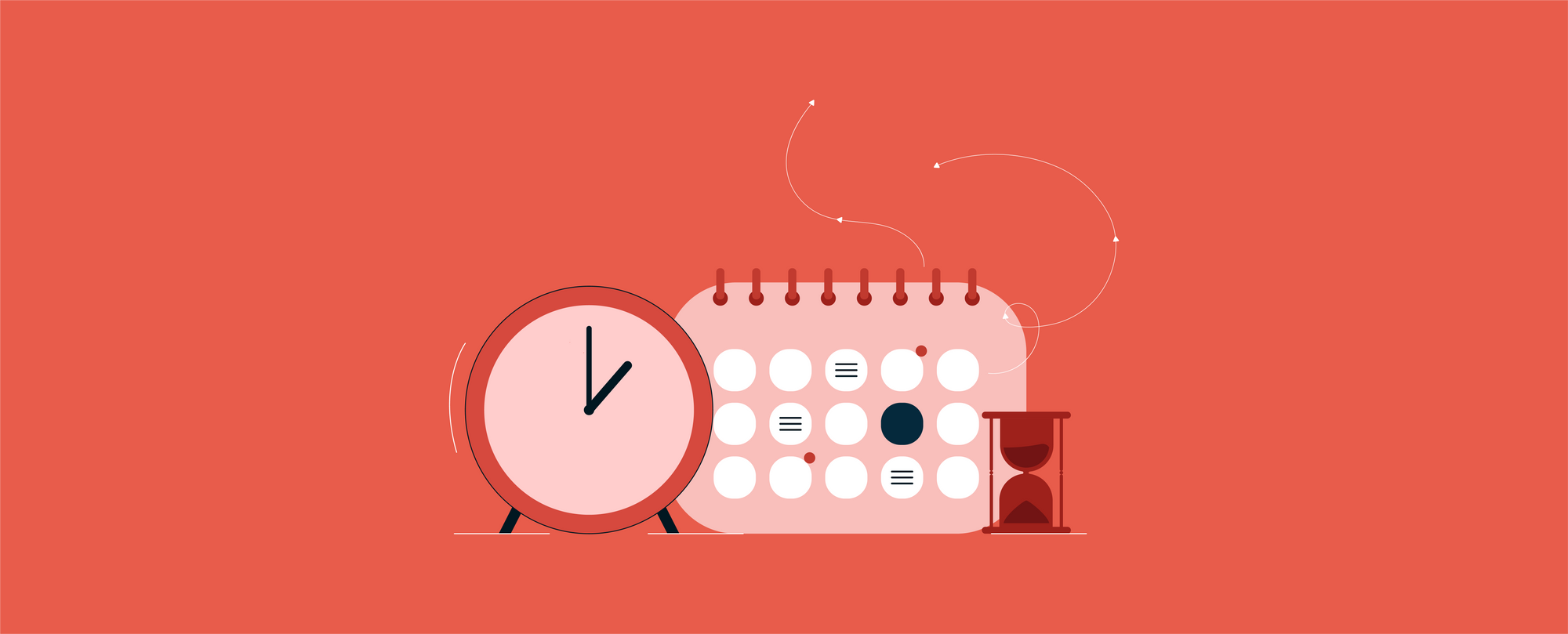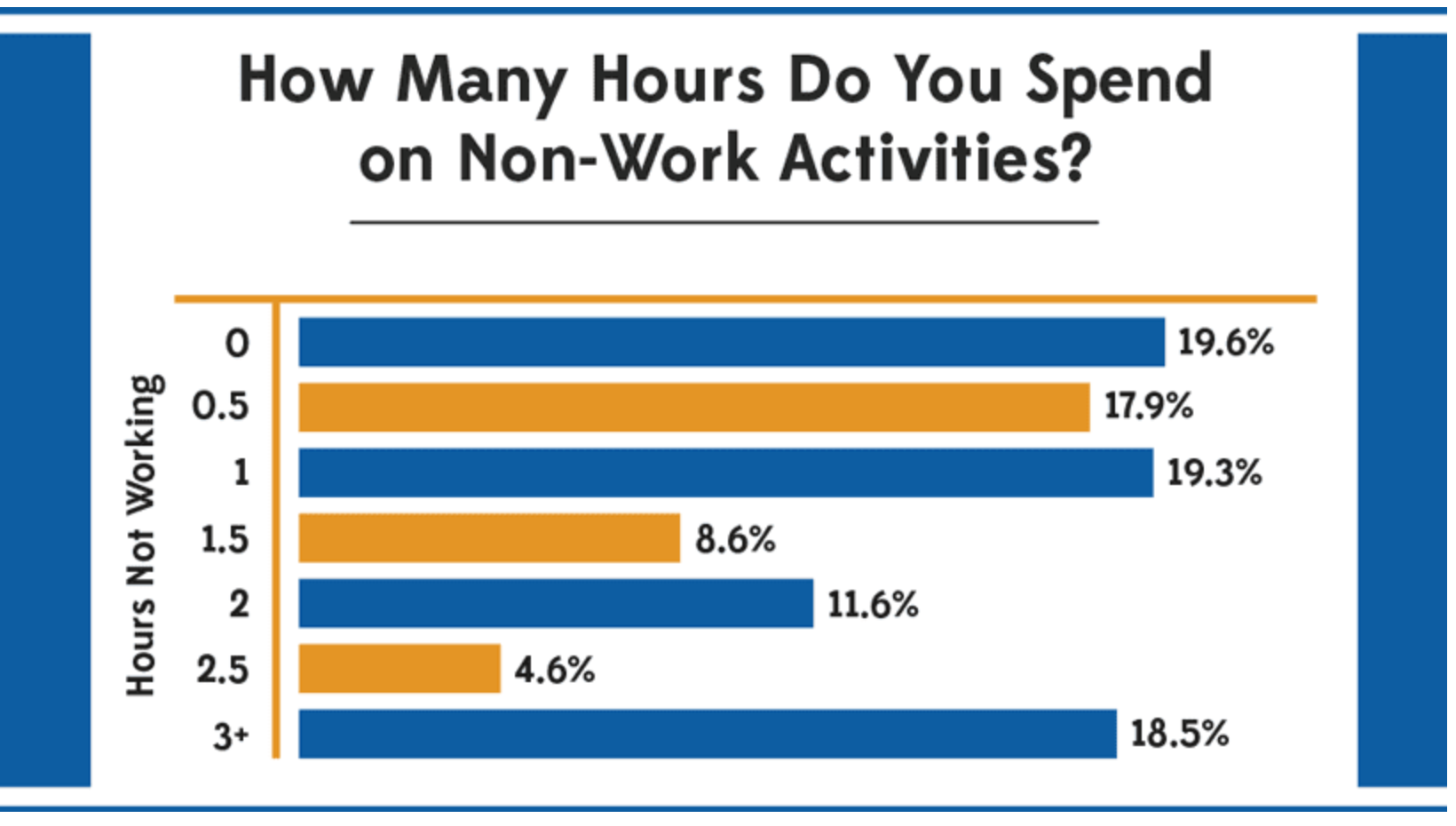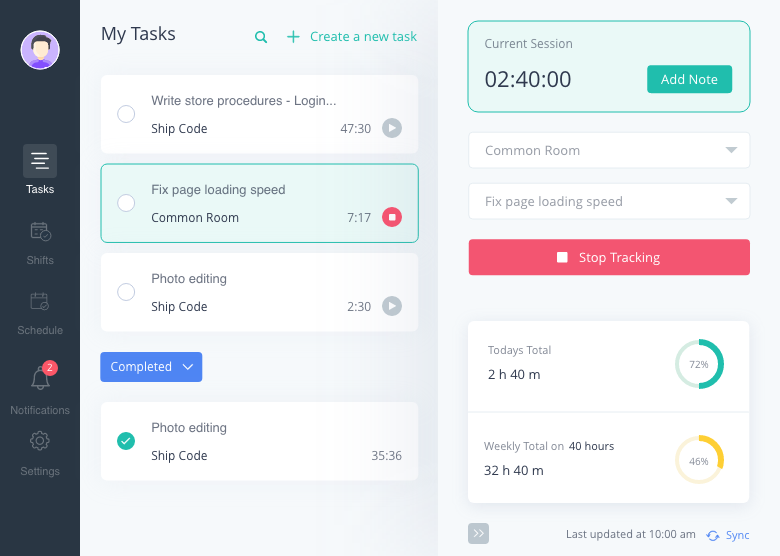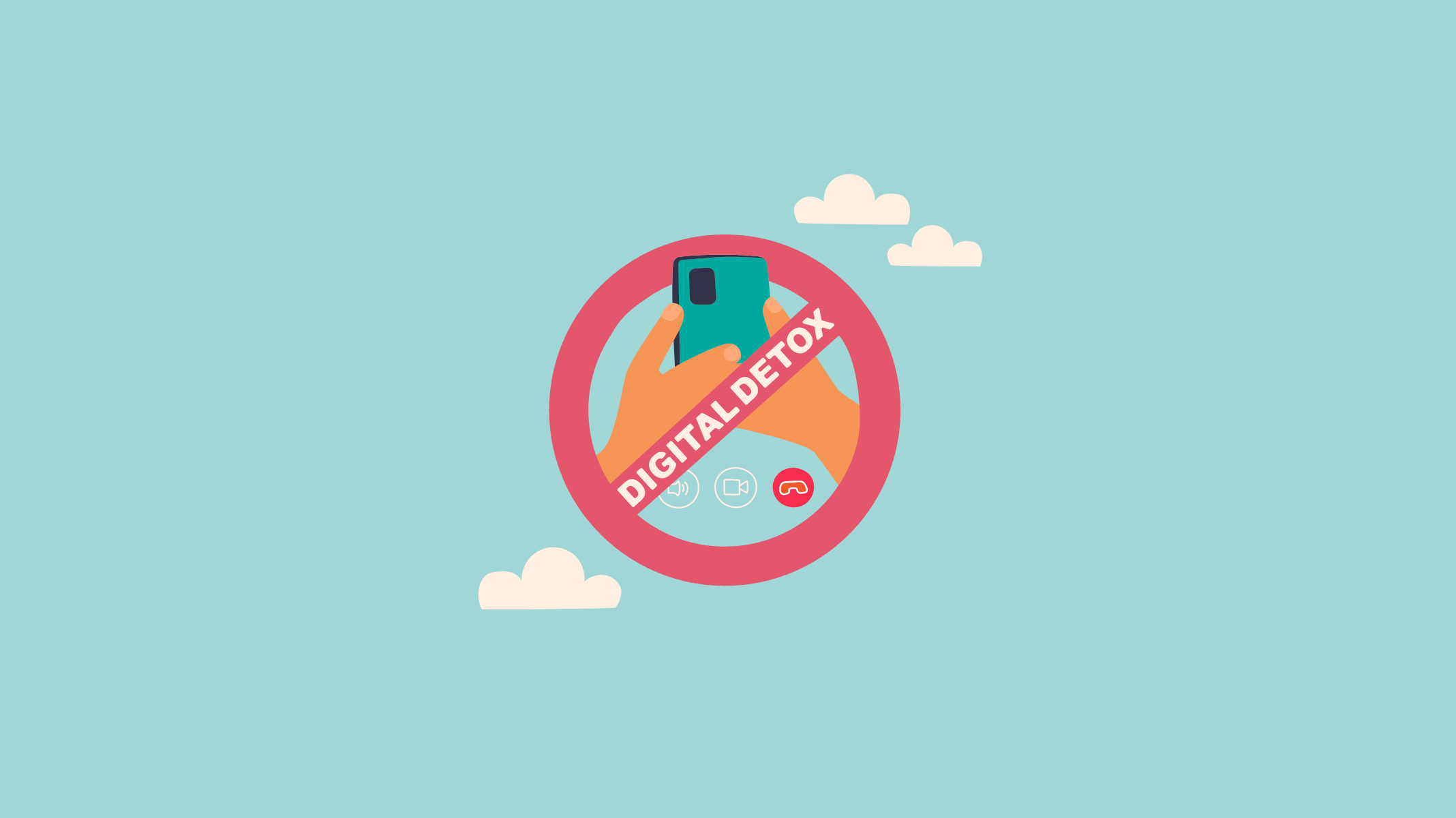12 Common Time Wasters in the Workplace (and How You Can Avoid Them)
No Credit Card Required.

Workplace time wasters are those bad habits and behaviors like procrastination and distractions that throw your productivity off track. They rob you of valuable time, slow you down, and get in the way of your career development.
But good time management can change everything. It helps you focus on what really matters, removes distractions, and ramps up your productivity.
In this post, we’ll break down some common time wasters and share simple, effective strategies to beat them. You’ll get practical tips to work smarter and feel more satisfied with your job.
Let’s begin!

What Are Time Wasters in the Workplace & How to Avoid Them
Here are 12 time stealers at the workplace and some effective strategies to avoid them to increase employee productivity and improve work-life balance.
1. Social Media
Mindlessly scrolling through social media has become a habit for all of us and it doesn’t stop at work. Even a quick sneak peek to check your notifications takes away your focus and makes deep work impossible.
You'll have an average of 40 seconds of attention span when your phone is near. No wonder why social media usage is now one of the biggest productivity killers at work.
To avoid this time waster in the workplace, you must resist the urge to access social media during work hours. Establish block times when you'll refrain from using social media at any cost.
This is essential for improving employee productivity and reducing office distractions.
Read more on
How to Monitor Employee Internet Usage & Online Activities?
It'll be hard to get along in the beginning but gradually it will become normal. For further assistance, you can get help from some productivity tools that can assist you in the starting period.
2. Emails
It's estimated that an employee wastes around 2.5 hours of productive time each day by checking emails.
Although checking email is part of the job a major portion of it is just another source of distraction. This is a prime example of time-wasting activities at work.
Avoid randomly checking emails. Divide your day into multiple segments and keep a specific portion of the time for email checking and reply.
Also, clear out unnecessary messages by deleting them in bulk using Gmail features or automation tools like Clean Email to help manage your inbox efficiently. This approach is a part of effective communication strategies.
I find it's best to check email after lunch hour when you tend to be less productive for any focus-driven work. Keep a fixed time window like 30 min or 1 hour for checking and replying to emails.
Keep in mind your focus and concentration work timeframe should never be distracted by anything at all.
You may also like:
↘️How to Increase Productivity in the Workplace
3. SmartPhone/Personal Work
Frequently checking smartphone notifications, irrelevant calls, texting with your friends, and relatives, online shopping, etc. are just killing tons of your time. These are some of the best work time wasters and contribute to personal internet browsing during office hours.
If you want to be productive there is no other way than dropping these habits.
Be as restrictive as you can regarding doing any personal work at the office period. This not only helps you keep yourself on track but also benefits your office to a great extent by reducing idle time and task overload.
Avoid using smartphones on the desk is a great way to start this off. Also, employers are now focusing on employee monitoring and time tracking solutions to prevent employees from wasting time and ensure better output.
4. Unnecessary Meetings
Do you know what's worse about meetings?
They never feel like time wasters, but they always end up wasting an insane amount of time from every office day. Meeting overload is among the top workplace time wasters.
What's the solution?
Just put a full stop on unnecessary meetings.
Ask yourself before creating or joining any meeting. What are the specific outcomes you and your team are going to get?
If that's nothing significant just plainly avoid those meetings. This strategy helps in optimizing meeting efficiency and workflow optimization.
Canceling meetings without clear agendas and only inviting those who need to be there is a good way to cut down on time wasted.
Moreover, you can introduce meeting-free days, set time limits, and document meetings to ensure employees feel comfortable missing meetings when their attendance may not be 100% necessary.
Check out some more tips on how to stay organized at work.
5. Gossiping
When you are in deep work, your coworker can come to you with irrelevant work or discussion that can damage your productivity.
Researchers have found that 86% of employees gossip during the workday. That’s why it is one of the main examples of office interruptions and time wasters in the workplace.
Additional studies by the University of Virginia and Indiana University demonstrate that gossip damages trust and diminishes employee engagement, morale, and reputation.
How can you tackle this? Unfortunately, there is no proven way.
The best you can do is enforce a positive workplace culture and have policies in place to deal with extreme cases of negative gossip against employees.
HR can encourage an uplifting culture where each one of the employees will have positive participation regarding how we can make the workplace better and manage organizational behavior.
6. Multitasking
Do you think multitasking makes you smart & productive? You are wrong.
Multitasking is actually a time killer which prevents you from finishing off priority tasks on time. Along with that, it diminishes your focus and productivity as well. It's one of the hidden productivity killers and leads to inefficiency.
Learn how to prioritize instead of doing everything at once. Take one task after another and learn to say no to additional workloads that are dumped on you. This aligns with best practices for focus and concentration and task management.
Try taking help from different project management tools to keep everything organized and prioritized. Especially kanban board could be very helpful in terms of organizing tasks by priority and preventing task overload.
7. Procrastination & Overthinking
Procrastination is one of the biggest time thieves in any workplace. It usually comes from a fear of failing, striving for perfection, or simply feeling swamped by a task.
Overthinking makes it worse by spending way too long planning or analyzing instead of just doing the work.
Putting things off doesn’t just cut down on the time you have to get things done; it also increases stress and anxiety levels. And when you overthink, decision-making freezes up. It becomes even harder to take that next step.
To overcome procrastination at work, break tasks down. Smaller steps feel more doable. Set deadlines for each one. This way, you can keep moving forward with confidence.
8. Noisy Environment
The noisy office environment or unnecessary loud coworkers can distract you from your work which wastes your time.
A loud printer, the ring of cell phones, gossiping, and talking loudly make the office environment noisy. This is one of the time wasters in the workplace that often goes unnoticed and contributes to workplace interruptions.
You have to have zero tolerance for the noisy office environment. Point it out to the management and ask for instant action.
If you can't influence the work environment directly then I'd suggest you buy noise-cancelling headphones and deep dive into your focus work.
9. Ineffective Delegation
When managers or team leaders don’t delegate tasks properly, things fall apart fast. Responsibilities tend to pile up on just a few individuals, while others remain underutilized and disengaged.
This imbalance often leads to burnout among the overwhelmed team members.
Then, confusion sets in, deadlines get missed.
Ultimately, team members waste valuable time trying to determine who is accountable for what, further damaging productivity and collaboration.
Assign tasks based on each employee’s strengths and be clear about what you want done and what the result should be.
10. Overcommunication
Yes, communication matters. But let’s face it, too much communication can backfire.
Flooding people with endless emails, constant messages, and a barrage of meetings leads to information overload.
This nonstop stream of messages pulls them away from deep, focused work.
That way, distractions pile up, productivity takes a nose dive, and creativity takes a hit. Critical thinking suffers the most, and all of this stands in the way of meaningful results and real innovation.
Use one main platform for team updates and pick specific times for checking and replying to messages.
11. Micromanagement
Micromanagement kills creativity. When employees feel suppressed, they disengage. It’s a waste of time for both managers and workers.
Micromanagement kills creativity and innovation within a team.
When employees feel consistently suppressed and controlled, they are more likely to disengage from their work. It decreases morale and productivity.
This detrimental cycle not only affects the individual workers but also wastes valuable time and resources for managers.
Trust your team; let them do things their way. You just set expectations, then measure results and not the process.
12. Remote Work Distractions
Working from home comes with its own set of time westers; the household chores, family members popping in, or that enticing television in the background trying to distract you.
Without the structure of an office, it’s easy to let work and personal life blend into one chaotic mess. Staying focused can feel like an uphill battle.
You must recognize these sneaky time-wasters and tackle them head-on. Prioritizing your tasks helps maintain efficiency and find that sweet spot of work-life balance.
Set up a dedicated spot just for work. Stick to regular working hours and let everyone know when you're working.
So, what is the number of top workplace time wasters?
Throughout this article, we have identified seven major time wasters. In our analysis, these 12 common time wasters in the workplace are the most significant contributors to reduced productivity.
Why It is Important to Address The Biggest Time Wasters at Work
Manpower is one of the biggest assets for a company of any size.
Your ultimate goal has to be utilizing this power to the best of your ability and attaining peak efficiency.
Time wasters in the workplace keep you from reaching this goal. Also, consider the financial loss you incur.
According to Forbes, millennials waste 2 hours a day or 40 hours on average at work and The US Bureau of Labor Statistics states that an employee in the private sector earns $32.92 per hour.
That’s $1316 wasted every month for each millennial worker. This highlights the issue of time theft.
So, it's in your best interest to eliminate these common time wasters in the workplace.
How to Overcome Workplace Time-Wasters
Here are some of the strategies that proved to be very effective in terms of removing workplace time wasters and improving productivity.
Set a Schedule for Deep Work

My personal favorite strategy.
In my long career, I've not found anything that beats focus work.
Focus work means you'll delve into the work with top most focus and avoid accessing anything. (No social media, no email checking, meetings, etc.). This is how you can eliminate time wasters in the workplace.
Try setting up a task goal and an hour goal for your everyday focus work. You can also encourage your employees to set a schedule for deep work by themselves. Encourage using the Pomodoro tracker which was very useful in my case.
This method is part of attention management and strategies for better time management.
Every coworker will know the schedule of each one's deep work, so no one will distract anyone in that time frame.
When in deep work mode, you can set your phone to Airplane mode, and block distracting websites on your devices using focus apps like Freedom or Forest.
If you don’t want to be interrupted by others, use noise-cancellation headphones. For remote teams, you can share working tips remotely with them to stay more productive, addressing remote work challenges.
Use Time Tracking

Implement the use of time-tracking and employee-monitoring software across your organization. You can conduct project time-tracking or track specific tasks with the prominent apps.
This helps prevent employees from wasting time at work.
You can encourage your employees to take charge and improve their working process to eliminate time-wasting activities.
Plus, Time-tracking software like Apploye generates performance metrics that will help you hold your team accountable and aid decision-making related to increasing workplace productivity.
Establish Email Communication Hours

You should select a specific time to check the email that you have received and reply to them.
Also, let everyone know what is your typical replying time so nobody keeps bothering you unnecessarily. This practice helps in managing email overload.
Limit Your Smartphone Usage

Restricting your phones to access any time can be a game-changer for you. The less you use it the more productive your days become.
To bring this to effect you can keep your phone away from your desk (preferably in your drawer or somewhere you can't see it).
Designate a specific time of the day when you'll be using your phone. This eliminates one of the biggest time wasters at work and reduces workplace distractions.
Reduce the Use of Social Media

Try digital detox. Avoid social media at work or limit it as much as you can.
Set a specific time each day when you want to go on social media. Turn off the notifications on your mobile and laptop.
Also don't forget to sign out from your social media accounts from your office devices. It mitigates the effects of social media on work productivity.
Keeping a certain quota of time to use social media can be very useful for some people.
Automate Your Workflows
Using workflow automation tools will eliminate mundane, repetitive, and tiresome tasks from your employees' work schedules.
This addresses some common time-wasters for office workers and aids in workflow optimization.
You can integrate most of the tools you use and bring it all into one platform. This cuts back time wasters as employees can access most tools from one platform, enhancing efficiency improvement.
Allow Healthy Break Times
Trying out a million productivity improvement strategies won’t get you a hundred percent efficiency.
In the end, humans need breaks to function.
Overworked employees are likely to make more mistakes which can cost you even more money than wasted working hours.
So, allow enough breaks for you and your employees to feel refreshed, which is essential for preventing burnout in the workplace and maintaining a healthy work-life balance.
The Role of Management in Reducing Time-Wasters
Management can make a productive workplace. By tackling time-wasting habits head-on, leaders are able to empower their teams to work smarter and get more done.
Creating a Productive Environment
- Set Clear Expectations: Outline specific and measurable goals. This keeps everyone focused and accountable.
- Minimize Unnecessary Meetings: Regularly assess the need for meetings. When they are necessary, stick to clear agendas and set time limits.
- Encourage Work-Life Balance: Promote flexibility and encourage regular breaks. These practices can significantly enhance productivity.
- Recognize and Reward Efficiency: Celebrate successes and highlight effective work habits. This boosts morale and inspires others to strive for efficiency.
- Provide the Right Tools: Equip your team with modern software that simplifies processes and boosts collaboration.
Speaking of the right tools, we have the perfect solution for you.
Why Choose Apploye to Boost Workplace Productivity
Apploye is your go-to work management tool filled with productivity features. It seamlessly combines time tracking, engagement monitoring, and activity oversight, even snapping screenshots along the way.
With features that track app and URL usage, it helps you spot distractions in real time. Plus, its project management capabilities let you assign tasks and monitor progress effortlessly.
Apploye gives teams the boost they need to stay productive and accountable, all while making work feel more manageable.
Ready to supercharge your team's productivity?
Conclusion
Wasted time at work is inevitable, but if you become aware of the time wasters in the workplace, you can reduce wasted time in the workspace.
By implementing these strategies and focusing on performance optimization, you can create a more productive and efficient work environment.
Frequently Asked Questions
What is the biggest time-waster at work?
At work, the biggest time-wasters usually come from personal distractions like scrolling through social media, sitting in pointless meetings, or managing excessive emails. It's so easy to lose your focus when jumping between tasks or getting caught up in office gossip.
How can I reduce time-wasters in the workplace?
Use time management tools like Apploye to avoid time-wasters at work. Set boundaries, turn off notifications, and focus. Prioritize your tasks with time blocking or try the Pomodoro Technique.
What are some examples of workplace time-wasters?
Examples of time-wasting activities in the office include scrolling through social media, sitting in meetings with no real purpose, and constantly replying to emails, all day long.
How do time-wasters affect productivity?
Time-wasters mess with your flow. They throw off your focus, push deadlines, and lower your performance. Over time, they can also reduce job satisfaction and increase stress due to inefficient use of work hours.
How can management help reduce time-wasters?
Management can step up and create a productivity-driven culture. Set clear goals, avoid unnecessary meetings, and equip your team with the right tools to manage their time. They need to hold people accountable, track progress, and reward those who get things done efficiently.